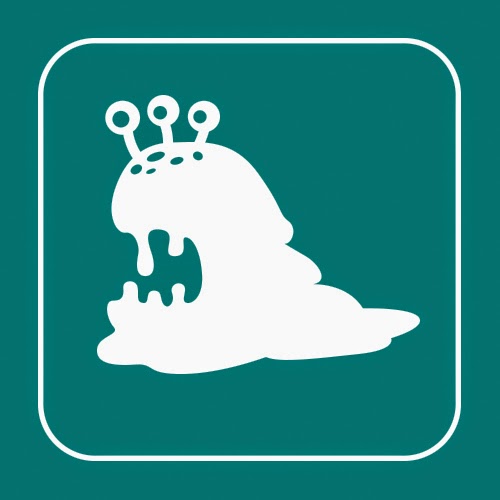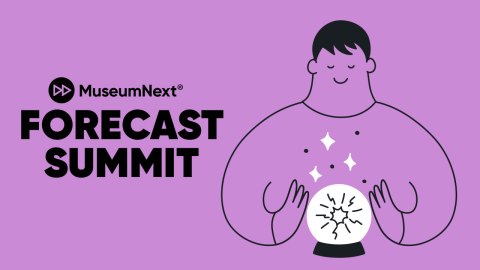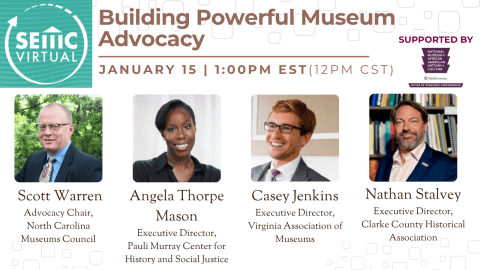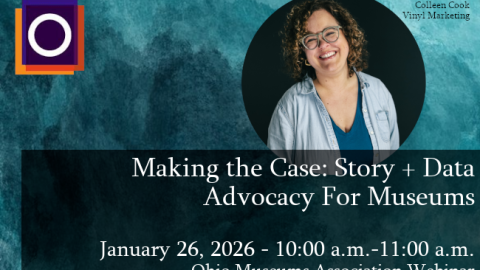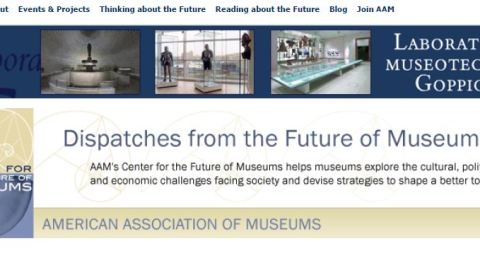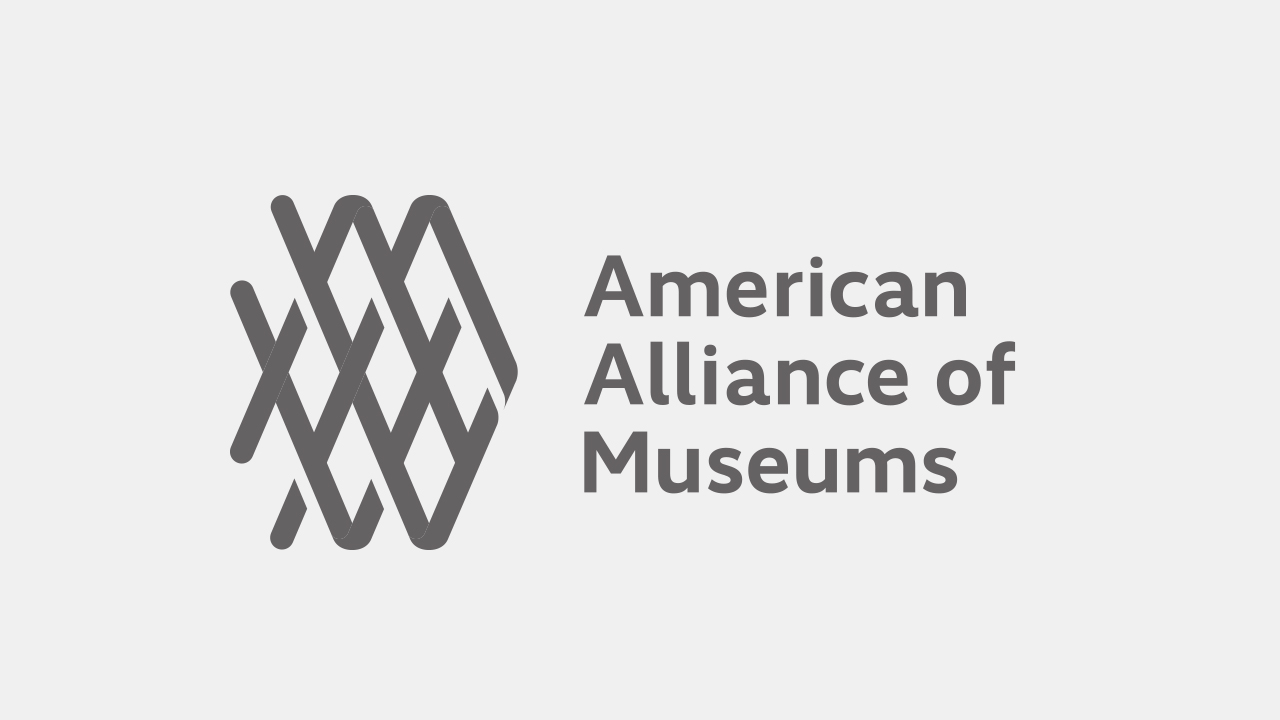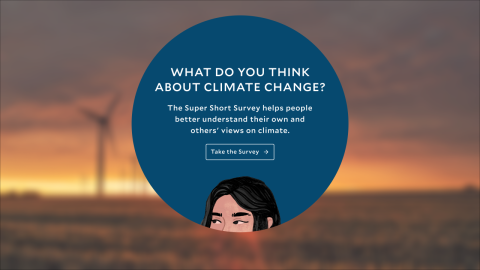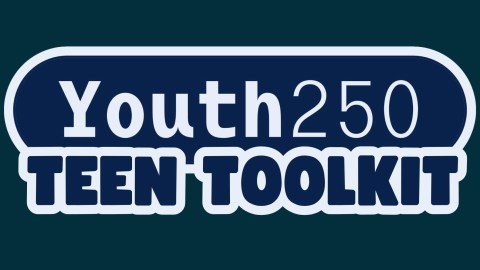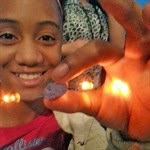
Since publishing “Building the Future of Education: Museums and the Learning Ecosystem,” I’ve been on the prowl for examples of museums creating local “vibrant learning grids” by beginning to weave immersive, experiential learning into the formal school system. When the Noyce Foundation announced the first seven recipients and two honorable mentions of its Bright Lights community engagement awards, I spotted the Great Science Academy (GSA) on the list, and invited Whitney Owens, vice president of education and guest experience at Great Lakes Science Center, to tell us more about their award-winning program.
 One of my favorite moments in the life of Great Lakes Science Center happens at the end of every program year, when I get to stand in front of the students, families, and community members involved in our signature teen program, Great Science Academy, and convene their graduation. On that day, I get to look out on a sea of bright, breathless young scholars, a corps of passionate volunteers and community partners, and a phalanx of model cities, underwater robots, Mars communication systems, and biometric games that students have created over the past year. Every year I am inspired by the commitment of this group of people, and the way that they have come together to create rich and varied opportunities for our scholars to learn directly from our Cleveland community.
One of my favorite moments in the life of Great Lakes Science Center happens at the end of every program year, when I get to stand in front of the students, families, and community members involved in our signature teen program, Great Science Academy, and convene their graduation. On that day, I get to look out on a sea of bright, breathless young scholars, a corps of passionate volunteers and community partners, and a phalanx of model cities, underwater robots, Mars communication systems, and biometric games that students have created over the past year. Every year I am inspired by the commitment of this group of people, and the way that they have come together to create rich and varied opportunities for our scholars to learn directly from our Cleveland community.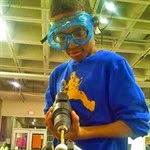 What seemed to set this program apart for Noyce Bright Lights judges is also what aligns it closely with the Vibrant Learning Grid scenario described in AAM’s recent report on Museums and the Future of Education: the program previews a future in which students will use their whole communities—including online resources, work experiences, and informal providers such as libraries and science centers as well as formal schooling—to find ways of learning that work for them. GSA’s model of distributed learning—engaging students with STEM where it lives in the Cleveland community—brings us closer to the Vibrant Learning Grid scenario and has made us think differently about integrating our region’s resources and expertise into our educational programming.
What seemed to set this program apart for Noyce Bright Lights judges is also what aligns it closely with the Vibrant Learning Grid scenario described in AAM’s recent report on Museums and the Future of Education: the program previews a future in which students will use their whole communities—including online resources, work experiences, and informal providers such as libraries and science centers as well as formal schooling—to find ways of learning that work for them. GSA’s model of distributed learning—engaging students with STEM where it lives in the Cleveland community—brings us closer to the Vibrant Learning Grid scenario and has made us think differently about integrating our region’s resources and expertise into our educational programming. We created GSA in 2011 to offer an opportunity for deeper STEM engagement to a critical age demographic, middle-school students. We know that, for this age group, seeing oneself in STEM is a major predictor of persistence in future STEM studies and careers, and we craved the creative space of a longer-format program to really develop teens’ and pre-teens’ interest in and curiosity about STEM in their community. We also wanted to give students practice in working and making decisions in the “real world,” building their skills in collaboration, problem-solving, and processing and filtering information in a noisy marketplace.
For 120 students each year (half of them participating through full need-based scholarships), GSA features deep content learning, creative problem solving through project-based learning, and access to scientists, engineers, and behind-the-scenes STEM industry. We recruit students from a range of audiences—from Science Center members to schools and community groups. Schools and afterschool organizations have been particularly strong partners for outreach: teachers and principals suggest students with an interest in STEM, connect us to families who may need scholarships, and provide additional social support and advice if we are struggling with how to help a student succeed cognitively or behaviorally. Some educators go even further: this year a local teacher is personally driving five students from her school to GSA sessions every single Saturday(!) Since GSA requires significant out-of-school time over the year, all program applicants must sign a personal letter of commitment; scholarship recipients must also provide evidence of need and letters from their families and teachers pledging to support students’ learning. Program fees and scholarships are subsidized by generous support from Arcelor-Mittal, NOAA, the Thomas H. White Foundation, and the Northeast Ohio Regional Sewer District—some of whose employees volunteer with the program, too.
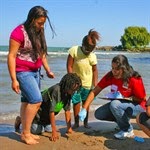 Students meet twice a month on Saturdays for about 5 ½ hours, plus an hour after school each week for group online hangouts facilitated by Science Center staff. Sessions are a balance of hands-on experiments at the Science Center, visits and mentorship from STEM professionals, and work on yearlong, student-led projects related to a regionally relevant topic: the Great Lakes for 6thgrade, Mars exploration for 7thgrade, biomedical technology for 8thgrade, and design and innovation for 9thgrade (you can see video examples of their projects narrated by program staff Brady Risner and Erika Zarowin below). Field trips are a major part of our teens’ learning: in the Great Lakes year, for instance, they visit the US Coast Guard to learn about oil spill cleanup and Great Lakes regulation, the Sewer District to learn about water processing, Edgewater Beach for a beach sweep with the Alliance of the Great Lakes, Old Woman Creek National Research Reserve to explore an estuary, and the Cuyahoga River to sail up the river that once caught on fire—an event that shaped the future of environmental legislation in America. Program volunteers—who mentor our students for a full year—come from a broad range of careers and add their experience to broaden students’ ideas about who can “do science.” We are building out the program year by year, and in 2015-16, we hope to bring on our 10th-graders as paid Science Center apprentices to help develop and deliver education programs.
Students meet twice a month on Saturdays for about 5 ½ hours, plus an hour after school each week for group online hangouts facilitated by Science Center staff. Sessions are a balance of hands-on experiments at the Science Center, visits and mentorship from STEM professionals, and work on yearlong, student-led projects related to a regionally relevant topic: the Great Lakes for 6thgrade, Mars exploration for 7thgrade, biomedical technology for 8thgrade, and design and innovation for 9thgrade (you can see video examples of their projects narrated by program staff Brady Risner and Erika Zarowin below). Field trips are a major part of our teens’ learning: in the Great Lakes year, for instance, they visit the US Coast Guard to learn about oil spill cleanup and Great Lakes regulation, the Sewer District to learn about water processing, Edgewater Beach for a beach sweep with the Alliance of the Great Lakes, Old Woman Creek National Research Reserve to explore an estuary, and the Cuyahoga River to sail up the river that once caught on fire—an event that shaped the future of environmental legislation in America. Program volunteers—who mentor our students for a full year—come from a broad range of careers and add their experience to broaden students’ ideas about who can “do science.” We are building out the program year by year, and in 2015-16, we hope to bring on our 10th-graders as paid Science Center apprentices to help develop and deliver education programs.This mix of hands-on curriculum, connection to STEM mentors, online interaction, and community integration gives our GSA scholars a student-centered network of opportunities, what KnowledgeWork’s Katherine Prince refers to in the AAM report as a “learning ecosystem in which many right solutions intersect and adapt to meet learners’ needs.” If emerging trends are any predictor, this kind of network may become more and more integrated into what we and our audiences think of as—and expect from—education.
For Great Lakes Science Center, a byproduct of creating this network is the connections that we build between GSA scholars and our community: we not only help our students access their resources, but we enrich the identity of Cleveland as a place where STEM is woven into the fabric of our region, accessible to all. Not all of our Great Science Academy students will become engineers, doctors, or researchers (the goal of many teen and workforce-development-type programs). We would love it if they do, of course—but we are as interested in developing citizens of Cleveland and the world who know how to find and use scientific resources, can make decisions based on good data and feel comfortable within a community framework guided by innovation and the quest to make our region a better place. So scholars, what I want to say to you is this: use those beautiful young minds to be scientists—or artists, journalists, teachers, or parents–who can be STEM citizens, working for and with our communities in all their richness and challenge.
